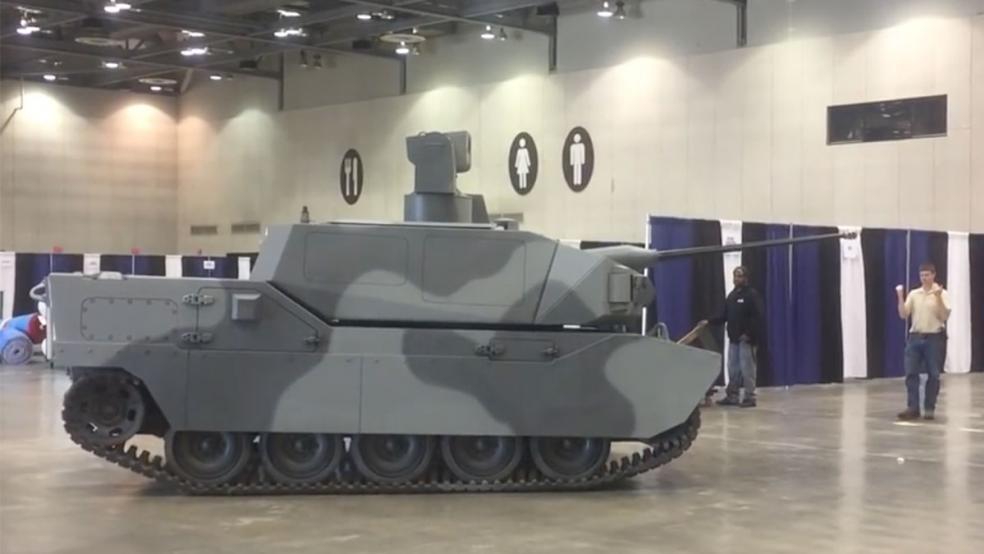The M1 Abrams tank — the main war machine of the U.S. Army and Marines — is a monster: A 60-ton, 32-feet-long, 8-feet-high, 12-feet-wide mass of heavy armor that has a crew of four and gets three miles to the gallon.
But in the future, big may not be better.
Related: The US Navy’s $13 Billion Answer to China and Russia
At an event held this week by the Association of the United States Army, a nonprofit that supports the military, BAE Systems showed off what could be the future of armored ground warfare: a 12-ton, highly robotic “baby Abrams” that requires fewer crew members, can be more easily transported to a battle zone and slurps far less fuel.
In laying out the upsides of a trend toward smaller tanks, the website Breaking Defense made what is perhaps the most important point about less cumbersome war machines, which have become favorites of the Russians: Because they are more mobile and smaller, they are harder to hit.
Sometime this year, according to Breaking Defense, the Army will begin considering the contours of what it is calling the Next Generation Combat Vehicle. Highly automated armored war machines such as BAE’s Armed Robotic Combat Vehicle will likely get a hard look.
Breaking Defense suggested that completely robotic mini-tanks might also serve as what it called “wingmen” to full-sized armored vehicles. But advances would be needed. The BAE machine can operate from point to point autonomously but needs a human hand for precise driving.
Related: Is the F-35 Really Streaking by Its Troubled Past?
As the Army evaluates what it wants in a new combat vehicle, one factor could be cost. While there is no price tag on the BAE prototype, Russia’s new, lighter-weight tank, the T-14 Armata, costs about $4 million apiece, and the Abrams costs about $9 million each.





